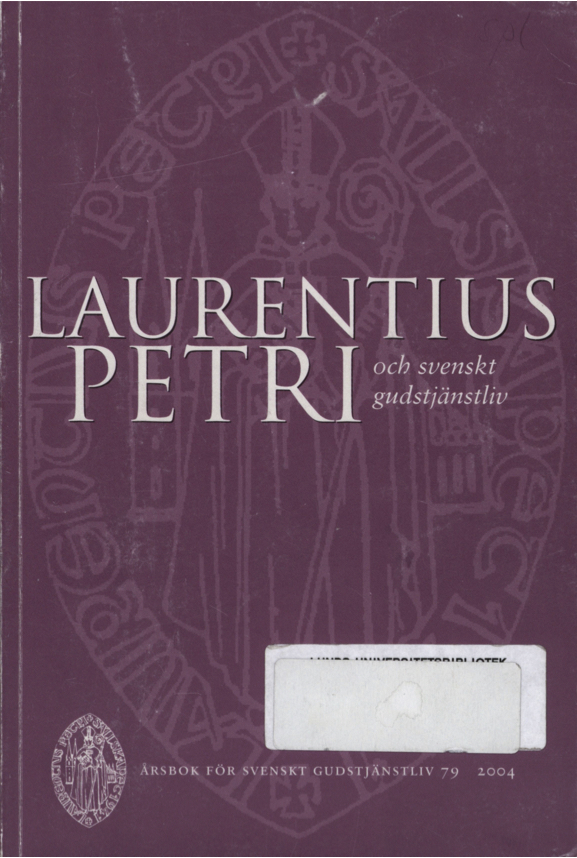Laurentius Petri och gudstjänstsången
Abstract
The 16th century liturgy reform in Sweden was decidedly conservative: the general progress of the mass was left intact with the exception of the canon missae. The office, too, was to a large extent preserved: though mostly in abbreviated form, matins, sometimes followed by lauds, and vespers, sometimes followed by compline, were sung especially at the great festivals of the liturgical year; and in city churches connected with Latin schools, they should in principle be sung every Sunday starting with Saturday evening. Musically, a good deal of the Gregorian chant was preserved, but a new musical genre that would become more and more predominant was the Kirchenlied inherited from the Evangelical churches in Germany.
For the future, much depended on the availability of songs with Swedish texts. Laurentius Petri, 1499-1573, archbishop since 1531, very much cared for the Gregorian chant in office as well as mass, but the only melodies that became consistently adapted to Swedish texts were those of the ordinarium missae, together with the metrical hymns and the four main cantica of the office (the Benedictus, Magnificat, Nunc dimittis, and Te Deum). The Biblical lessons should always be sung or read in Swedish, but the remaining parts of the office would still be sung in Latin. Behind this decision lay an educational aspect. The choir priest institution could no longer be upheld for economical reasons, so the responsibility for the choral chant lay on the teachers and pupils of the Latin schools, and it was regarded instructive as well as edifying for them to practice singing in Latin. As late as 1620, a Liber cantus was published containing a selected ordinarium missae in Swedish together with an abridged antiphonale entirely in Latin. Several of these ordinarium songs are still in use in the eucharistic liturgy of the Swedish church, whereas most of the Latin songs of the office were abandoned and forgotten during the lapse of the 17th century already.
Hymn books dominated by the Kirchenlied genre were published in constantly enlarged editions. The first edition 1530 contained 10 songs, the last edition of the century, 1594, contained 149 songs. The most important function of these hymns was to replace the Latin mass songs of the proprium de tempore. The longest songs of the ordinarium were also more and more replaced by hymns: the Nicene creed and the Laudamus with metric paraphrases by Luther and Decius. The hymns spread to many other areas of use. Their captivating melodies encouraged the congregations to partake more and more in the liturgical chant, which may well be their foremost advantage.
Downloads
Publicerad
Nummer
Sektion
Licens
© författarna, Laurentius Petri Sällskapet för svenskt gudstjänstliv samt Artos & Norma bokförlag. Det är tillåtet att kopiera och använda material ur Svenskt Gudstjänstliv för forskningsändamål om källan anges. För övriga ändamål kontakta respektive artikelförfattare samt förlaget. Särskilda restriktioner kan gälla för bildmaterial.


